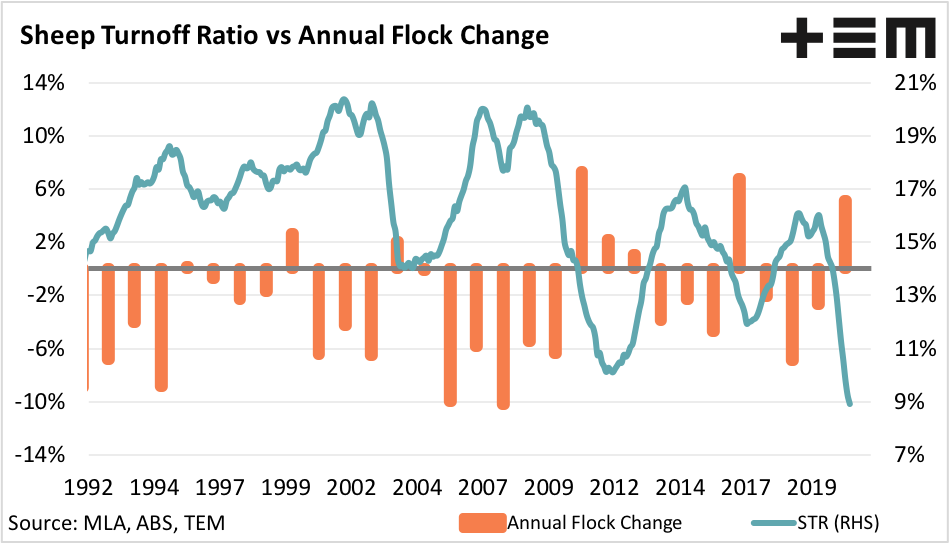Swing low sheep chariot

The Snapshot
- Sheep slaughter volumes for the June quarter dropped under 1 million head, which is the lowest quarterly slaughter volumes seen since June 2011.
- The Sheep Turnoff Ratio (STR) has moved to the lowest level seen, thus far, dropping to 8.6% for the June quarter.
- The annual average STR for the 2021 season now sits at 9.0%, confirming a strong rebuild to the flock is anticipated in 2021.
The Detail
Earlier in the week we published a piece on the female slaughter ratio (FSR) which is a measure that we often analyse to determine the status of the herd cycle, highlighting if we are in a liquidation or rebuild phase. We have a similar ratio that gives a clue to the status of the flock cycle, which we have termed the sheep turnoff ratio (STR).
The STR measures the total turnoff of sheep in Australia (slaughter and live export) as a proportion of the flock size, expressed as a rolling twelve month average percentage figure. Historically, when we compare the annual flock change to the STR we note that when the STR is below 14% we see flock rebuild. Similarly, when the STR is above 14% we often see flock liquidation take place.
The release of Australian Bureau of Statistics sheep slaughter data for the June quarter in 2021 last week allowed us to update the STR to the middle of the year. Sheep slaughter volumes for the quarter dropped under 1 million head, which is the lowest quarterly slaughter volumes seen since June 2011.
The 2010/11 period was the last time we saw a significant rebuild of the Australian flock, when the flock increased over three successive seasons. This period also coincided with a drop in the STR toward 10%. This June we have seen the STR move to the lowest level seen, thus far, dropping to 8.6% for the quarter. The continued decline in the STR has moved the annual average STR for 2021 from 9.3% to 9.0%.
A comparison of the annual average STR to the annual flock change highlights a reasonably strong correlation between the two series, with a correlation coefficient of 0.647. The line of best fit demonstrates that an annual STR of 9% suggests an increase to the flock of 7.4% isn’t out of the question in 2021.
Although, as the scatter plot demonstrates the actual figures don’t always perfectly align to the line of best fit. However, it does provide a reasonable guide as to what we can expect. Meat and Livestock Australia are currently forecasting an increase of 6.3% to the flock this year from 64 million head to 68 million head. If we manage to see a higher proportional rebuild, closer to the 7.4% suggested by the current STR level, this could see the flock approaching 69 million head.


